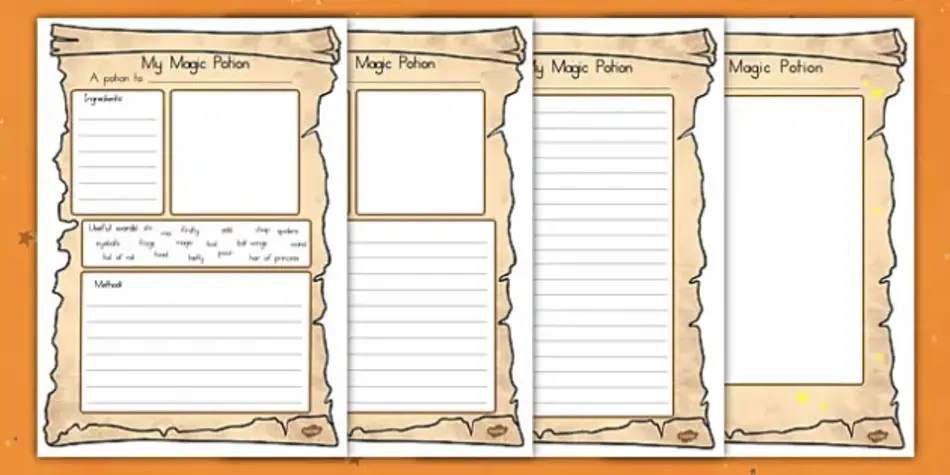Life Style
Skill Builders & Story Starters: The Magic of Writing Worksheets
Published
10 months agoon
By
James flick
Key Takeaways:
- Writing worksheets can be a fun and engaging way to boost essential writing skills in students.
- These worksheets serve as excellent tools for encouraging creativity and structured learning.
- Incorporating writing exercises into daily routines can greatly enhance students’ overall literacy.
Table of Contents:
- What Are Writing Worksheets?
- Benefits of Writing Worksheets
- Different Types of Writing Worksheets
- How to Use Writing Worksheets Effectively
What Are Writing Worksheets?
Writing worksheets are invaluable educational tools to help students practice and improve their writing skills. They span a range of activities, from sentence structure exercises and grammar drills to creative story prompts and expository writing tasks. These worksheets are a staple in many classrooms, supplementing traditional teaching methods and providing students with additional practice. For instance, incorporating 4th grade writing worksheets into lesson plans can greatly enhance students’ ability to express themselves clearly and creatively.
Moreover, writing worksheets can be easily tailored to meet the specific needs of students at different skill levels. By offering students a structured and engaging way to practice their writing, writing worksheets can significantly boost their confidence and proficiency. From young learners who are just starting to write sentences to more advanced students crafting full essays, writing worksheets provide a versatile and effective supplement to any educational curriculum.
Benefits of Writing Worksheets
Writing worksheets offer numerous benefits that make them indispensable in the educational landscape:
- Skill Development: Regular practice with writing worksheets helps students develop essential writing skills, such as grammar, syntax, and vocabulary. By systematically working through these exercises, students can build a strong foundation that supports their overall literacy. Frequent use of these tools helps reinforce the lessons taught in class, leading to a deeper understanding and better retention of writing rules and conventions.
- Creativity Boost: Story starters and creative prompts included in many writing worksheets encourage students to use their imagination and think outside the box. These activities are particularly effective in sparking creativity and helping students develop a unique voice in their writing. By presenting students with interesting scenarios and questions, writing worksheets allows them to explore new ideas and express themselves innovatively.
- Structured Learning: Writing worksheets provide a structured approach to learning that can be particularly beneficial for young students. They offer a clear framework for practicing different writing skills, making it easier for students to grasp complex concepts. This structured format helps ensure that students receive consistent and comprehensive instruction, which is crucial for their development as proficient writers.
Different Types of Writing Worksheets
There are various types of writing worksheets that educators can use to address different aspects of writing:
- Grammar Worksheets: These focus on sentence construction, punctuation, and parts of speech. They offer students targeted practice in using correct grammar and understanding the rules that govern written language. Grammar worksheets reinforce lessons on verb tense, subject-verb agreement, and proper punctuation.
- Creative Writing Prompts: These offer scenarios and questions that inspire students to write creatively. By presenting students with interesting situations or thought-provoking questions, creative writing prompts encourage them to develop original stories and express themselves uniquely. This type of worksheet is especially effective in helping students develop their narrative writing skills and explore their creative potential.
- Research & Expository Writing: These guide students in organizing and composing essays or reports. They provide a framework for conducting research, organizing information, and presenting it clearly and coherently. Expository writing worksheets help students develop critical thinking skills and learn how to communicate complex ideas effectively. This type of writing is essential for success in academic and professional settings, making these worksheets a valuable addition to any curriculum.
How to Use Writing Worksheets Effectively
To make the most out of writing worksheets, consider the following tips:
- Incorporate Regularly: Integrate writing worksheets into daily or weekly lessons to ensure consistent practice. Regular practice is key to helping students develop and maintain their writing skills. By making writing worksheets a regular part of the curriculum, educators can provide students with the consistent practice they need to improve their proficiency and confidence in writing.
- Provide Feedback: Offer constructive feedback to help students identify areas for improvement and track their progress over time. Effective feedback should be specific, actionable, and supportive. By highlighting strengths and areas for improvement, educators can help students understand what they are doing well and where they need to focus their efforts. This feedback is crucial for helping students develop a growth mindset and continuously improve their writing skills.
- Encourage Revisions: Use worksheets that encourage multiple drafts and revisions to teach the importance of editing and revising. Revisions are a crucial part of the writing process, helping students refine their ideas and improve the clarity and coherence of their writing. Educators can help students develop a deeper understanding of the writing process and the value of continuous improvement by providing opportunities for students to revisit and revise their work.